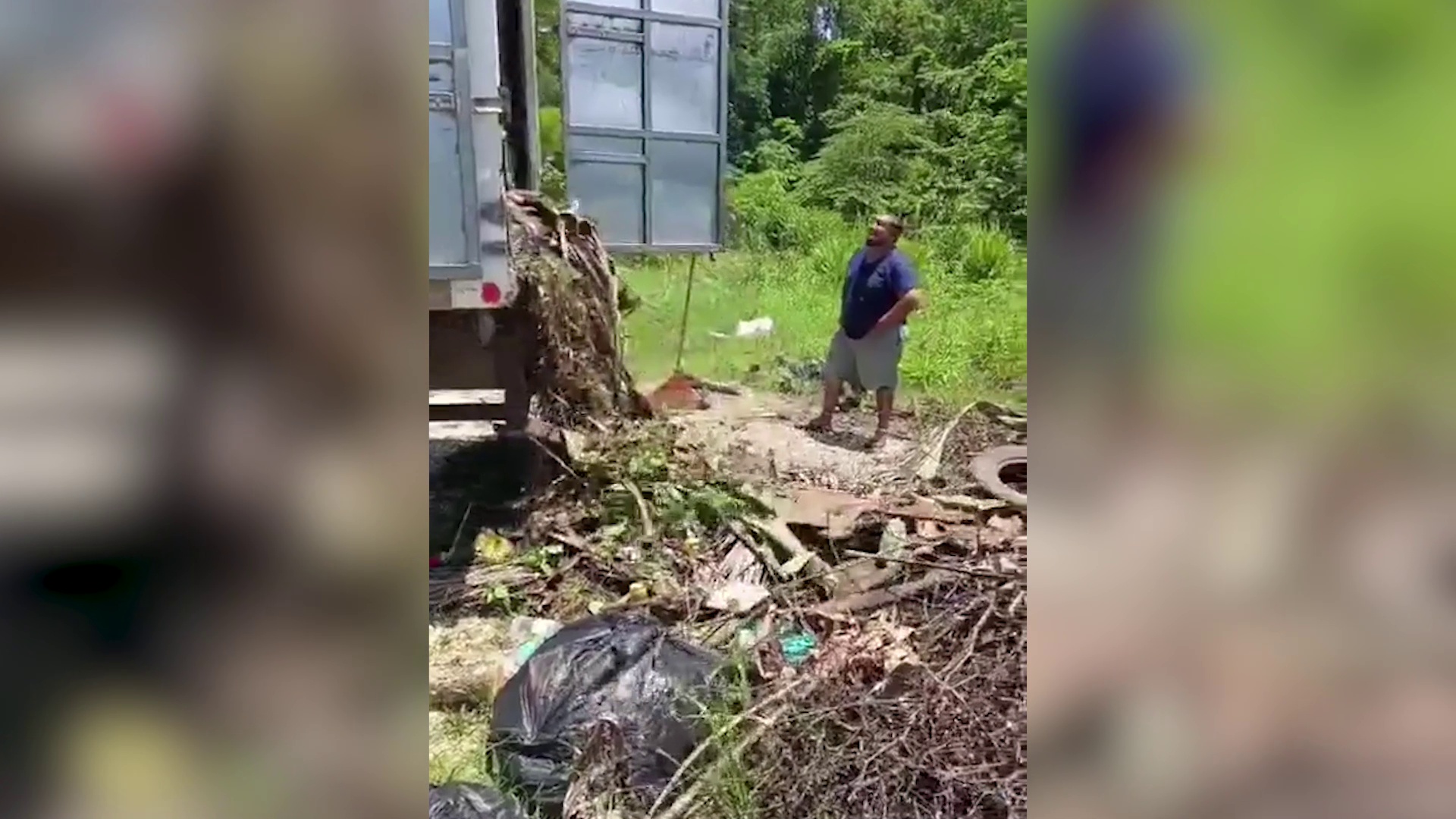It’s a mess that’s been piling up for years, and now, residents of Cristo Rey have had enough. Just outside the village entrance, an illegal dumping site has turned a piece of private land into a growing eyesore. Locals say it’s more than just trash, it’s a threat to their health and their community. So today, we headed west to hear their concerns firsthand. News Five’s Britney Gordon has that story.
There’s a serious pollution problem happening in Cristo Rey Village. Earlier this week, a video depicting several people dumping a truckload of trash onto a private property in the village began circulating on social media. This property is just off the side of the road at the entrance of the village, making piles of trash one of the first things people see when entering the community. Village Chairman, Wilmer Guerra, says this problem has been occurring ever since the fence closing off the area was removed during the road upgrades a few years back.
Wilmer Guerra, Chairman, Cristo Rey Village
“They were constructing the road, they broke off the fence that was here. And so people now have access to this area. And before it was just a steep hill. But now the construction of the road, they level it off so people can easily access it. And they’re just illegally dumping their garbage now for two years now.”
Britney Gordon
“So we know that this is a private property. Why has it become the council’s initiative to consistently clean it up? What’s the cons that you guys are seeing in the community?”
“For us, I think it’s very important to clean it off every time it accumulates because we depend a lot on tourism or main source of income for is tourism. There’s a lot of resorts close by. So it’s a very bad image. The first thing that comes into Cristo Rey, it’s this illegal dump site.”
Just a little over two months ago, the village council hosted a cleanup, removing all the unwanted trash. Unfortunately, the polluters just keep coming back. We spoke to an employee at the nearby Table Rock Jungle Lounge, to hear how the situation has been impacting the local tourism sector.
Zeekion McNab, Table Rock Jungle Lodge
“You can obviously see there’s litter there and, and then yes. Right now, it’s slow season, like I mentioned, so most of our guests, they prefer to rent a vehicle rather than book transportation. And with that then they, and then, furthermore, they don’t really know the roads that well, so they come slowly. So it’s obvious that they will definitely be seeing that there. And it’s not a nice sight.”
The litter raises even larger concerns over the potential environmental ramifications. Not too far away from the property, there is a creek that leads into the Macal River.
“Here we have river, which is right below. We here we have river access. We offer canoeing, Tubing also for our guests. And the first thing they’ll think you, oh, we’re not getting in that river because of. What could be coming out from up there, even though it’s a bit farther downstream, but still, it would affect us all. And I believe the same would go for a lot of other lodges on the riverside.”
According to villagers, the dumping is primarily carried out by non-residents of Cristo Rey. Carmita Guerra, owner of Carm’s Restaurant, shares her disappointment in the lack of civic pride among Belizeans.
Carmita Guerra, Owner, Carm’s Restaurant
“It’s disgusting to see that people come from other places to dump garbage close to our village because here in the village, like especially me, that I have my business. I pay every time they pick up garbage, sixty dollars to throw my garbage. So it’s very hard to see that people just come in and dump. And here our village is a village where it’s a lot of tourism. We work with tourists, we work with the BTB. And then it’s very hard for us to see that if our villagers left like that, the people throw garbage and then our people that come visit us, they will say the people from Cristo Rey, they are very dirty. They are people that are nasty.”
Guerra explains that the village has an efficient garbage disposal system in place. Additionally, there are designated dump sites located on the Benque road and in San Antonio village, making the illegal dumping an unnecessary endeavor.
“It’s unfortunate that it’s not people from Cristo Rey. It’s not people from Santa Elena, San Antonio. In Cristo Rey, we have a very robust domestic garbage management program in which we do every two weeks we go from household to household collecting garbage, and then we transfer it to a station on the Benque road. So we do have that and people have already become accustomed to it and they’re expecting it. Whenever three weeks passes and you haven’t done it, they give you a call and say, you know what, when will you pick up garbage? Because they don’t like throwing garbage everywhere. And so I’m very proud of the Cristo Rey people and it’s unfortunate enough that it’s now people from Santa Elena, San Ignacio, and other areas that are coming in and dumping their garbage here when they’re even closer to the dump site than us.”
After the fence was broken down to reconstruct the road, the Ministry of Public Works promised to repair it, however, that promise is yet to be fulfilled. The polluters captured on video have been reported to police, who are now conducting an investigation. Britney Gordon for News Five.
